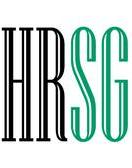
Author: Anne Fulton, CEO, Fuel50 / Career Engagement Group
Career development has a concrete impact on overall business performance and is a powerful driver of revenue, found a new benchmarking survey of over 100 global organizations conducted by Career Engagement Group (CEG). The survey found that organizations with the ability to attract key performers and develop an internal talent pool through career development reported greater overall revenue growth during the last financial year. Organizations with improved HR processes increased revenue growth by up to 2.5 percent.In addition, 31 percent of survey respondents said career engagement was a predictor of revenue growth, as compared to 7% using traditional engagement methods. And 75 percent said career development is a key driver of engagement in the organization.
“Effective career engagement practices lead to business return by building internal talent bench strength,” says Anne Fulton, CEO, Career Engagement Group. “Top performing organizations are developing a broad and diversified internal talent pool, which provides them with sufficient internal talent to meet strategic challenges.”
In fact, the survey found that there was a whopping 66 percent correlation between having enough talent to meet strategic needs and overall HR performance. Sufficient internal talent allowed best practice organizations to fill key leadership roles internally, increase internal recruitment and reduce overall recruitment costs. This improvement in the HR function improved bottom line financial outcomes, including overall HR performance, revenue growth per employee, and overall business revenue growth.
Although 87 percent of organizations preferred to recruit internally where possible, it appeared that many were struggling to translate this objective into practice. Internal recruitment was vastly lower than external recruitment in the majority of organizations, and was lower than 25 percent for the largest portion of respondents. Despite such low internal recruitment, 50 percent of all senior leadership roles were filled internally.
The survey also found that about half (49 percent) of respondents offer coaching for all employees and more than half (58 percent) hold career conversations with all team members. However, only half (50 percent) have the necessary time to support the career growth of their reports.
“The principal barrier to career engagement is poor communication between senior management and leaders, as well as between leaders and their teams,” says Fulton. “Managers need to draw internal opportunities to the attention of their reports, and make team members aware of potential career paths within their organizations.” Survey respondents felt that growing your people is the best way to grow your business. Career engagement results in decreased absenteeism, reduced attrition and hiring costs, increased productivity, and an increased ability to fill key roles internally. However, the survey found that respondents do not have sufficient time to provide career development support to their employees. This is an unfortunate disconnect because having sufficient opportunity to express career preferences to their manager was the third most critical practice for determining overall career engagement success. Click Here for the latest articles by the Author.

